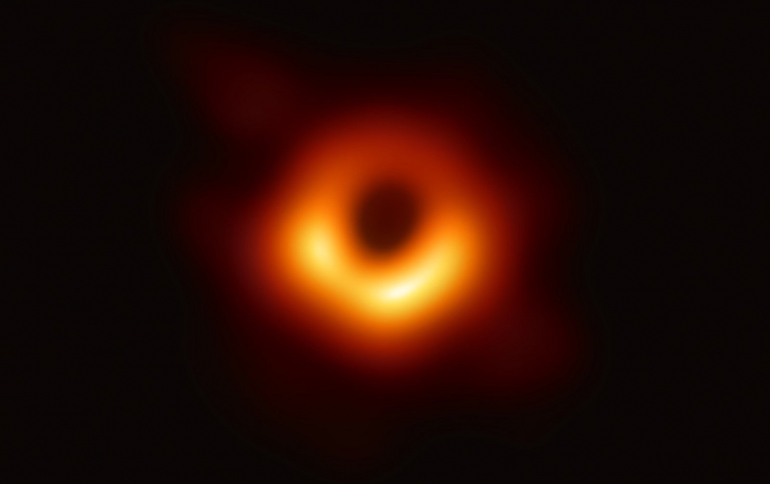
This is The First Ever Image of a Black Hole
A black hole and its shadow have been captured in an image for the first time, a historic feat by an international network of radio telescopes called the Event Horizon Telescope (EHT).
This major discovery provides visual evidence for the existence of black holes and pushes the boundaries of modern science.
Black holes are extremely compressed cosmic objects, containing incredible amounts of mass within a tiny region, from which no light can escape. Their presence affects their surroundings in extreme ways, by warping spacetime and super-heating any material falling into it. Anything that comes within a black hole’s “event horizon,” its point of no return, will be consumed, never to re-emerge, because of the black hole’s unimaginably strong gravity. By its very nature, a black hole cannot be seen, but the hot disk of material that encircles it shines bright. Against a bright backdrop, such as this disk, a black hole appears to cast a shadow.
Using the Event Horizon Telescope, scientists obtained an image of the black hole at the center of galaxy Messier 87, outlined by emission from hot gas swirling around it under the influence of strong gravity near its event horizon. Messier 87 is an elliptical galaxy some 55 million light-years from Earth. This black hole is 6.5 billion times the mass of the Sun.
The first ever observation of a black hole is the result of the large scale international research collaboration Event Horizon Telescope (EHT).
Catching its shadow involved eight ground-based radio telescopes around the globe, operating together as if they were one telescope the size of our entire planet. These are located at challenging high-altitude sites, including in the Spanish Sierra Nevada, volcanoes in Hawaii and Mexico, mountains in Arizona, the Chilean Atacama Desert, and Antarctica. More than 200 researchers from Europe, Americas and East Asia are participating in this major international operation.
To complement the EHT findings, several NASA spacecraft were part of a large effort, coordinated by the EHT’s Multiwavelength Working Group, to observe the black hole using different wavelengths of light. As part of this effort, NASA’s Chandra X-ray Observatory, Nuclear Spectroscopic Telescope Array (NuSTAR) and Neil Gehrels Swift Observatory space telescope missions, all attuned to different varieties of X-ray light, turned their gaze to the M87 black hole around the same time as the Event Horizon Telescope in April 2017. If EHT observed changes in the structure of the black hole’s environment, data from these missions and other telescopes could be used to help figure out what was going on.
While NASA observations did not directly trace out the historic image, astronomers used data from NASA’s Chandra and NuSTAR satellites to measure the X-ray brightness of M87’s jet. Scientists used this information to compare their models of the jet and disk around the black hole with the EHT observations. Other insights may come as researchers continue to pore over these data.
This major scientific achievement marks a paradigm shift in our understanding of black holes, confirms the predictions of Albert Einstein's General Theory of Relativity. Einstein a century ago even predicted the symmetrical shape that scientists just found.
The achievement also opens up new lines of enquiry into our universe. The first image of a black hole successfully captured was unveiled in six simultaneous press conferences across the globe today.
There are many remaining questions about black holes that the coordinated NASA observations may help answer. Mysteries linger about why particles get such a huge energy boost around black holes, forming dramatic jets that surge away from the poles of black holes at nearly the speed of light. When material falls into the black hole, where does the energy go?
Scientists will be working on dissecting the entire spectrum of light coming from the M87 black hole, all the way from low-energy radio waves to high-energy gamma rays. With so much data from EHT and other telescopes, scientists may have years of discoveries ahead.













